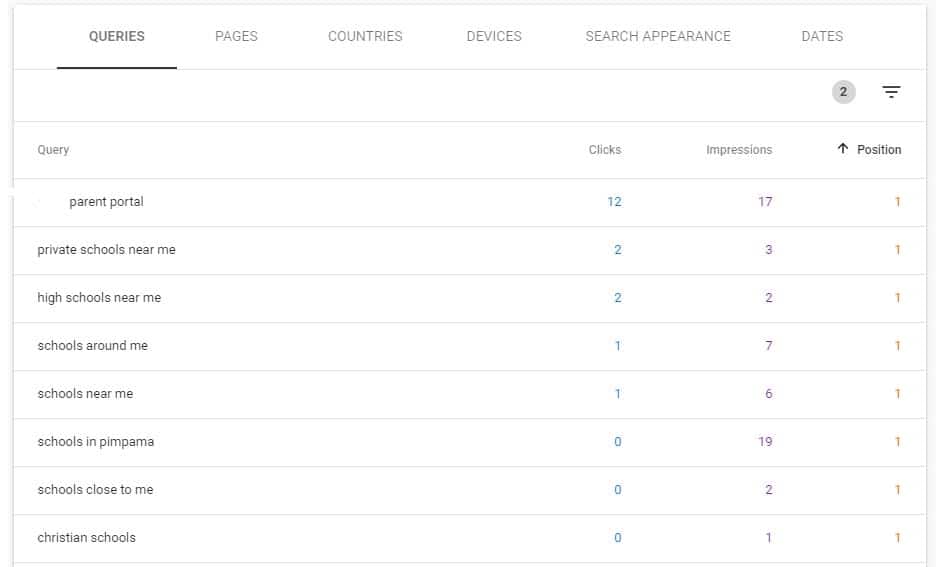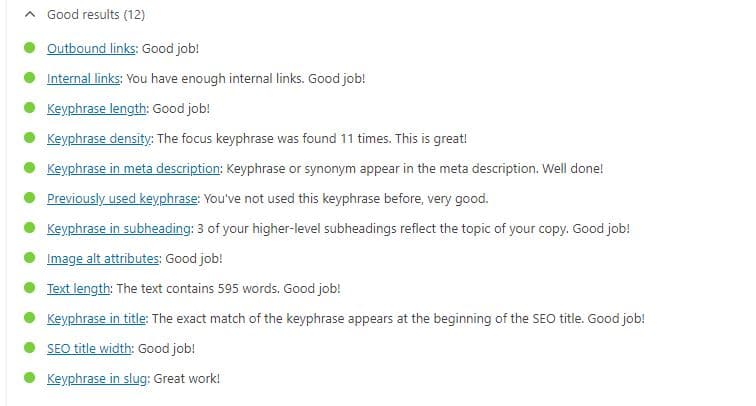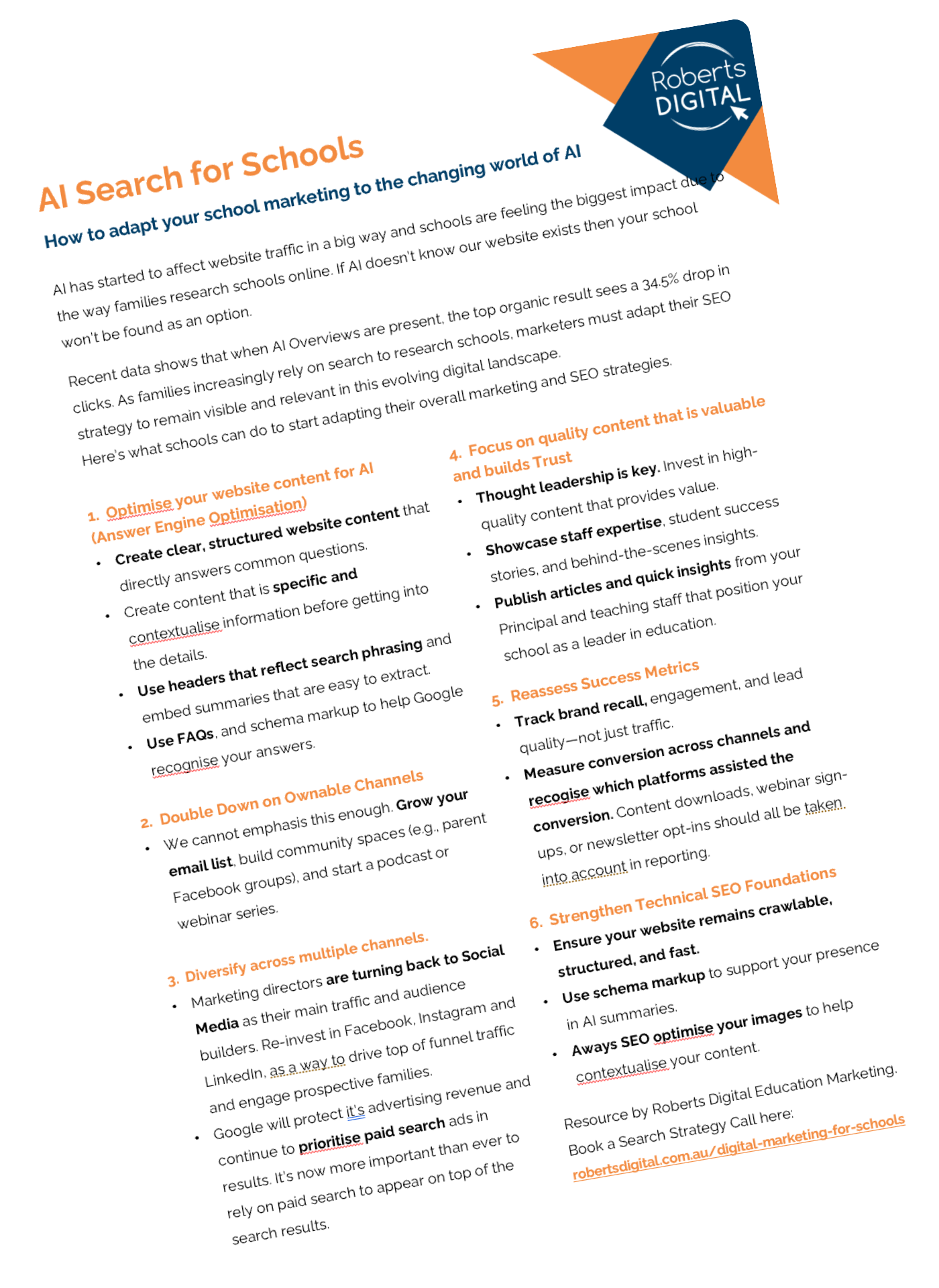SEO for schools
The biggest untapped potential source of enrolments for you. Do you know how many prospective parents searched for schools in your area last year? If you have not looked into the numbers, you may underestimate the potential of local SEO for schools, or you may assume you have a strong position while the tides have changed. Search rankings are continuously changing and so is SEO practice. This article is a comprehensive go-to article for school marketers that includes everything you need to know to start out in SEO for schools.
Where do I start?
Search Engine Optimisation (SEO) is the process of increasing your school website’s organic (free) traffic volume and quality through intentional strategies, both on and off your school website. The biggest question we get asked at Roberts Digital is ‘Where do I start?’
The maze of data can get overwhelming when looking at 100s of pages of content on your website, trying to dissect where your traffic is coming from and filtering through the endless list of possible keywords. The intention of this article is to break the big task of school SEO into bite-sized tasks so that you can steadily make progress and increase website traffic.
For non-technical marketers SEO for schools may sound scary, but it is a surprisingly practical skill that takes a methodical approach to master. While we will cover a few technical aspects of SEO for schools too, most of our suggestions will give you a great starting point. The first step of SEO for schools is knowing your current standing, so we will start with how to perform an audit of your SEO position.
Know Your School’s SEO Position
SEO for schools is less of a science and more of an art form, in that you will need to take educated guesses when starting out so that the data can feed your decisions later on (I recently wrote an SEO health check article to help you cover the basics if you would like to check it out).
Have you ever had someone walk into your office and say something like, ‘We are not ranking for independent schools in Woop Woop’. Before you get on the defence, ask yourself this, ‘Is anyone actually searching for that keyword?’ Our starting point for SEO is keyword research – finding out which keywords are driving high quality traffic for your audience, then gaining an understanding of how you rank for those keywords.
Start your research by opening up an incognito browser window (it is important that you do your research in incognito mode so that your previous search history doesn’t influence your search results) and type in what you think your top keywords would be. Spend some time looking at the schools at the top of the results and take notes on the content of their web page, the keyword frequency in that page, the images used and any opt-ins they may have. This process will help you set the benchmark for what you will need to do when creating new content.
The next way to research where you stand is to use Google’s Search Console tool. It is relatively quick to sign up, and verifying your domain will require you to show that you own the school website and have authority to view data on that site.

Example Google Search Console Performance Report
Once you are setup and have given Google some time to collect data, you can find a report on the top SEO keywords people are using to find your school website by clicking on the performance tab. This report shows you the keywords people are using, your position for that keyword (1-10 is good) and the number of people that clicked through to your website because of that keyword.
How to Choose Your Focus Keywords
Once you understand the keywords that are driving traffic, it is time to start choosing the keywords you would like to focus on for the next year. When starting out, I would pick 12 keywords (one a month) to begin with.
Start off by highlighting the keywords from your search console list that have a high search volume that you are not ranking well for. These keywords represent high opportunity keywords that will be refined to make your final list.
Refine your list further by picking keywords with a high intent behind them, meaning that you should pick keywords that indicate enrolment interest rather than general traffic. For example, leave out keywords like ‘term dates’ and go for keywords like ‘Private School Sydney’.
Also, when starting out, go for long-tail keywords rather than shorter keywords. Long-tail keywords are phrases with three to four words that are specific to your offering, such as ‘Private Schools Near Me’. Build authority by ranking well for longer keyword terms first before you try for the high traffic and competitive shorter terms.
Now that you have your keyword list and know your current SEO standing, it is time to start using them strategically on your website.
Keyword Inclusion
To start off, allocated one web page per keyword so that the content and focus of that page is focused on that keyword. Later on, it will become easier to have a page rank well for a few keywords, but to start, we want to focus all of our attention and effort on ranking well for one keyword per page.
Once you have identified your page’s keyword, you should try to incorporate it through your page by including it in your page title, URL, headings, body copy (especially the first paragraph), and image titles and alt tags. This is especially true for your home page and main landing pages.
There are plugins that help you manage your keyword inclusions by ranking each page on its keyword usage. If you have a WordPress website, YoastSEO is my favourite plugin to use.

YOAST
Link Building
Link building is where the rubber hits the road for SEO. There are three types of links we should be consistently working on for your school SEO:
- Internal Links
Internal links are links within your page that link to other pages within your website. This helps users to navigate your website in a natural way and helps Google to understand the structure of your website. If you link from a page that is doing well in terms of being found in search engines to a page that is not ranking as well just yet, your link will help your child page build traction for their own search engine rankings (this is called link juice).
- External Links
External links are links to other relevant websites within your content. Although these are an important part of your SEO strategy, they should be used carefully, especially when there is a specific call-to-action on your web page. When linking to other websites, ensure that you are linking to high quality traffic on well-regarded websites. When linking to external sites, make sure that your external link opens in a new tab instead of taking visitors off your website.
- Backlinks
Backlinks are the most valuable links to your SEO strategy, but they are also the most difficult to obtain. Backlinks are links from other relevant websites to your site. For schools, most backlinks are built using paid directories, such as a listing in the Private Schools Guide. There are, however, ways to get free links by contributing articles to parenting and education-related websites.
If you are not sure which website you can connect with, there are online tools like the ahrefs.com backlink checker that allows you to check the backlinks of your competitors. This will give you a good starting point of which website to contact and connect with.
Technical SEO
Technical SEO involves the technical working of your website. Your website structure, platform and technical setup is hugely important to your school’s overall SEO success. This is why it is so important to have your marketing and SEO objectives front of mind when preparing to build a new website.
While technical SEO is comprehensive field, I’ll highlight a few frequent offenders our team often finds on school websites:
- Mobile Friendliness
Since July 2019, Google implemented mobile-first indexing as the default option for their web crawler. This means that your website content is indexed and ranked using its mobile content first. It is important that you spend some time on your phone working through your site content to ensure it is mobile-friendly.
- Cross-browser Compatibility
We all have our favourite browser, but it is a good idea to not assume that every browser and device provides the same user experience. A little manual checking on various devices will go a long way. Online browser compatibility testing tools are also another option to check your website across multiple devices and browsers, including the tools from Browser Stack.
- Page Speed
Page speed is an important element to consider. Your website should generally take under 5 seconds to load for your user (giving some leeway for internet speed variability). A slower load speed will result in a high drop out rate and subsequently a lower ranking in search results.
- Broken Links
Broken links are a major contributing factor to poor SEO results. While school websites are extensive in content, it is important to periodically work through your site to ensure no links are broken. If content has moved, use a redirect to point traffic to its new location. If your site is registered with Google Search Console, the crawl report should pick up broken links that need fixing.
- Usability Issues
Issues such as overlapping content or invasive popups, actually impact on your school’s search rankings and your over website usage and are another detail to keep an eye on.
- Copy to Code Ratio
The content to html ratio for your web pages is important and search engines prefer pages with text between 500 to 1,500 words as a general guide. If you have a lot of pages with only a paragraph of text on each, try to collate these into one page. This will also make for a better user experience for your website visitors.
Using Google Search Ads to Compliment Your Strategy
We often get asked the question of whether schools should invest in SEO or Google Ads. In an ideal world, a school would invest all their efforts into SEO and rank highly for competitive keywords, but in reality we compete for traffic against various websites, including directories. These competitors are hard to compete against because they have 100s of school listings behind them. Also, we may be competing for students in highly competitive geographic areas or have a competitor show up in searches for our school name. In each of these cases, it is important to have Google Ads to cover your brand. Google Ads should be used strategically alongside your SEO efforts so that you have no gaps in your keyword strategy.
Additionally, Google Search ads can be used to measure the potential of a market and launch your keyword while your SEO strategy catches up.
Measuring Your SEO Success
School marketers can find it hard to keep up with the data and know where to start when it comes to SEO. Due to the the volatile nature of search rankings, it can be hard to place a pin on where you are now and the progress that you have made. While keywords are important and we always want to keep track of our rankings, it is equally important to not get lost in the detail. Keep an eye on the big picture, know how much organic traffic your site is receiving each month and which landing pages are driving the most traffic. These numbers can easily obtained in Google Analytics.
Let Us Do The Hard Work For You
Roberts Digital offers a whole suite of digital campaigns for schools to grow their enrolments, check our our SEO Services, or contact us to view a demo of our school campaigns.
Questions regarding this article? Please email me at mara@robertsdigital.com.au

